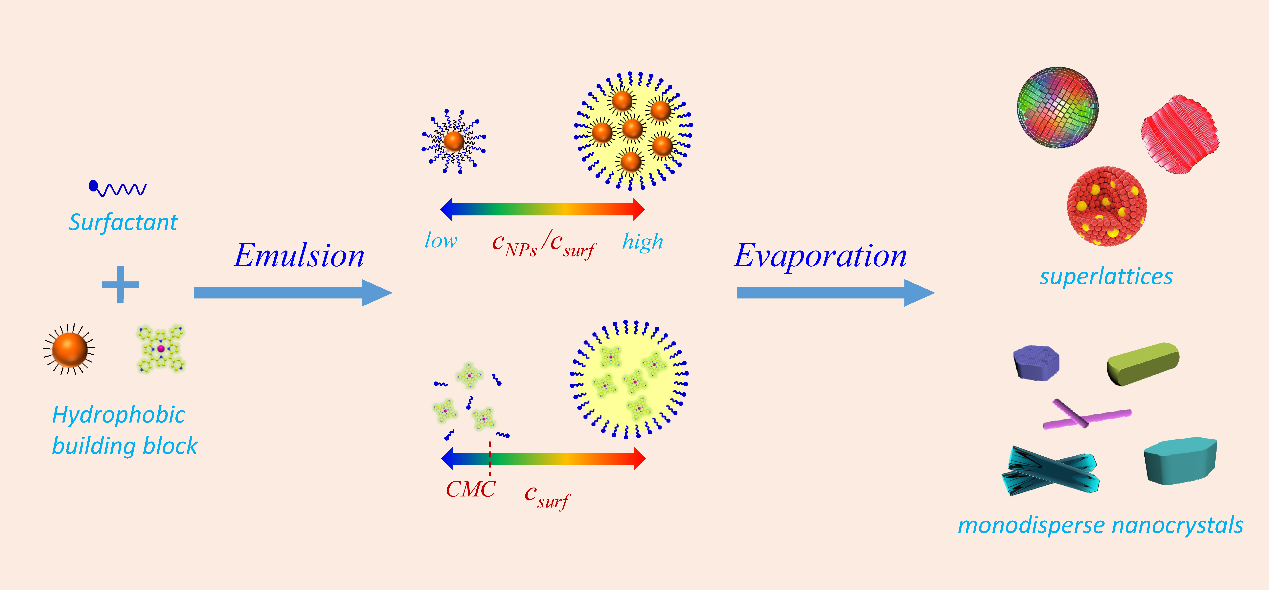Recently, Professor Feng Bai published a review titled by “Surfactant-Assisted Cooperative Self-Assembly of Nanoparticles into Active Nanostructures” in journal of iScience of CELL press (iScience 2019, 11, 272–293). Associate Professor Wenbo Wei is the first author for this paper, Prof. Feng Bai and Prof. Hongyou Fan (Sandia National Laboratories) are the corresponding authors.
https://doi.org/10.1016/j.isci.2018.12.025

Figure, Self-Assembly of Nanoparticles into Active Nanostructures
Nanoparticles (NPs) of controlled size, shape, and composition are important building blocks for the next generation of devices. There are numerous recent examples of organizing uniformly sized NPs into ordered arrays or superstructures in processes such as solvent evaporation, heterogeneous solution assembly, Langmuir-Blodgett receptor-ligand interactions, and layer-by-layer assembly. This review summarizes recent progress in the development of surfactant-assisted cooperative self-assembly method using amphiphilic surfactants and NPs to synthesize new classes of highly ordered active nanostructures. Driven by cooperative interparticle interactions, surfactant-assisted NP nucleation and growth results in optically and electrically active nanomaterials with hierarchical structure and function. How the approach works with nanoscale materials of different dimensions into active nanostructures is discussed in details. Some applications of these self-assembled nanostructures in the areas of nanoelectronics, photocatalysis, and biomedicine are highlighted. Finally, they conclude with the current research progress and perspectives on the challenges and some future directions.